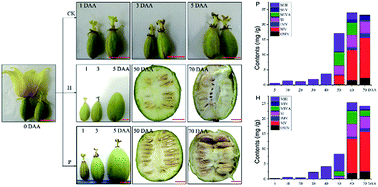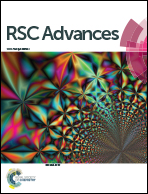Developmental, chemical and transcriptional characteristics of artificially pollinated and hormone-induced parthenocarpic fruits of Siraitia grosvenorii†
Abstract
Siraitia grosvenorii is a dioecious cucurbitaceae plant that is native to southern China and prevalent in Guangxi Province. Natural pollination of this species is difficult, and artificial pollination is therefore the main approach for its cultivation. The fruit set of the plants largely depends on the biosynthesis and crosstalk of phytohormones. Here, we show that parthenocarpic fruit can be induced by 1-(2-chloro-4-pyridyl)-3-phenylurea (CPPU, an active cytokinin) and gibberellin (GA3) in S. grosvenorii. In addition to pollination, similar changes were detected in the external quality and sweet mogrosides of parthenocarpic fruits. Furthermore, the transcriptome of S. grosvenorii fruits was assessed by RNA sequencing (RNA-Seq). Differentially expressed genes (DEGs) in the fruits set were compared with those in untreated ovaries. Excluding 2794 common DEGs, large numbers of genes expressed specifically in parthenocarpic (2281) or pollinated (6191) fruits were found. In conclusion, CPPU and GA3-induced parthenocarpic fruits offer novel insights for the large-scale cultivation of S. grosvenorii. This study yielded a number of candidate genes that can be applied in further studies to improve fruit quality and yield.



 Please wait while we load your content...
Please wait while we load your content...